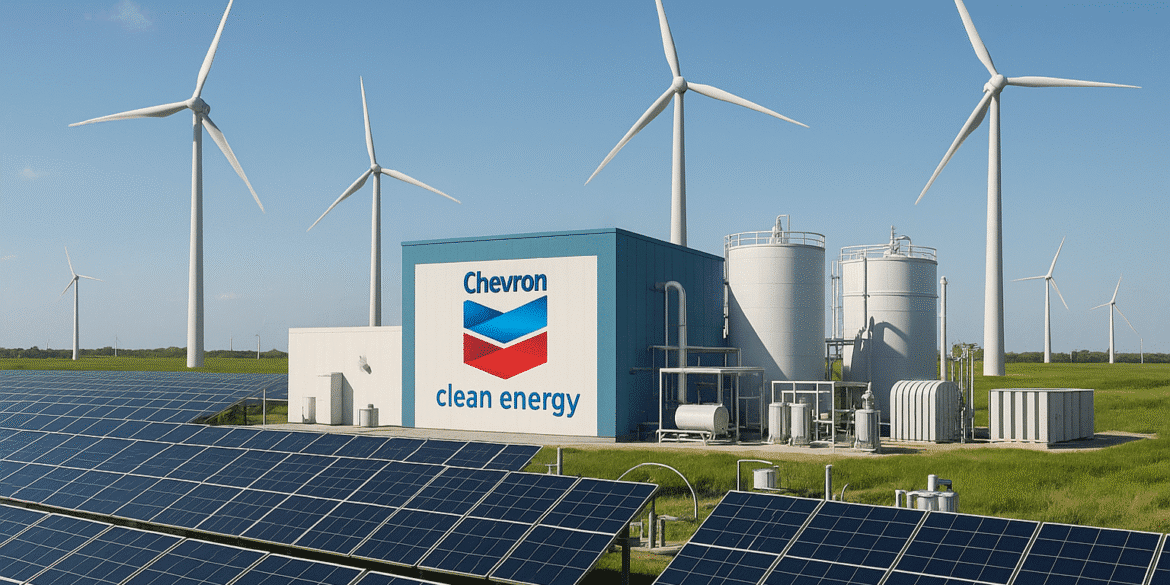In a bold move to accelerate the global transition to a low-carbon economy, Chevron Corporation has announced the launch of its largest venture capital initiative to date—the Future Energy Fund III, a $500 million commitment to clean energy technologies. Managed by Chevron Technology Ventures (CTV), this fund is designed to back pioneering innovations in industrial decarbonization, low-carbon fuels, energy storage, and carbon transformation technologies. This ambitious investment reflects Chevron’s growing focus on reducing greenhouse gas emissions and expanding its portfolio of sustainable energy solutions.
Chevron’s Strategic Focus on Clean Energy Solutions
The launch of the Future Energy Fund III is a significant step in Chevron’s ongoing efforts to diversify its energy portfolio while addressing the global climate crisis. The fund will focus on four primary areas where the company believes innovation can have the most significant impact on decarbonizing industries:
-
Industrial Decarbonization
One of the major focuses of the fund is to support the development of technologies aimed at decarbonizing hard-to-abate industrial sectors. This includes industries such as cement, steel, and chemical manufacturing, which contribute a significant portion of global emissions. Chevron is looking to back companies working on solutions like carbon capture, utilization, and storage (CCUS), which are crucial for achieving net-zero targets. -
Low-Carbon Fuels
With the transportation sector accounting for a large share of global carbon emissions, there is an urgent need for low-carbon alternatives to traditional fuels. Chevron’s fund will focus on supporting innovations in biofuels, hydrogen, and synthetic fuels, all of which could replace fossil fuels in industries like aviation and heavy-duty transportation. This is part of Chevron’s broader strategy to invest in technologies that will reduce emissions while maintaining energy security. -
Advanced Materials
The Future Energy Fund III will also back technologies that enhance energy efficiency through the development of new, sustainable materials. These materials can help reduce energy consumption across industries, leading to more efficient buildings, electronics, and vehicles. Innovations in this space could help accelerate the transition to cleaner, more sustainable infrastructure. -
Carbon Transformation Technologies
Carbon transformation technologies that convert carbon dioxide into useful products like plastics, fertilizers, and other chemicals are gaining traction. Chevron is keen on advancing these technologies as they could not only reduce emissions but also create valuable materials from waste carbon, addressing both environmental and economic challenges.
Chevron’s investment strategy will target early-stage startups as well as more mature companies that are ready to scale their operations. This will involve investments ranging from $1 million to $5 million, with the potential for additional funding as startups meet performance milestones.
Chevron’s Track Record in Clean Energy Investments
Chevron’s commitment to clean energy innovation is not new. Over the years, Chevron Technology Ventures has invested in a wide range of clean energy initiatives. For example, its Future Energy Fund I, launched in 2018, had an initial $100 million focus on promising startups in clean energy. In 2021, the company launched Future Energy Fund II, which saw a $300 million commitment to expand its clean energy investments.
These previous funds have successfully backed more than 30 companies, including well-known players in the clean energy space such as ChargePoint (an electric vehicle charging network), Carbon Clean (carbon capture technology), and Electric Era Technologies (advanced energy storage). These investments have not only advanced Chevron’s business interests but also contributed to the acceleration of clean technologies in the global market.
Industry Impact and the Path Forward
Chevron’s new $500 million fund positions the company as a significant player in the global clean energy transition. With this fund, Chevron aims to significantly accelerate the commercialization of breakthrough clean energy technologies that can help decarbonize heavy industries, reduce transportation emissions, and develop more sustainable energy systems.
The global energy landscape is changing rapidly, and Chevron’s strategic move reflects a broader trend in the energy sector. Major energy companies are increasingly recognizing the need to adapt to the pressures of climate change and environmental sustainability. Chevron’s willingness to invest heavily in clean energy solutions signals the company’s commitment to diversifying its business model, ensuring long-term profitability while contributing to global carbon reduction goals.
Through its latest investment, Chevron is also reinforcing its long-term sustainability targets. The company plans to invest $8 billion in lower-carbon businesses by 2028, as part of its ongoing commitment to reducing its greenhouse gas emissions and achieving net-zero emissions by 2050. Furthermore, Chevron’s leadership in backing innovative energy solutions serves as a call to action for other players in the energy sector to step up and embrace the clean energy revolution.
Conclusion:
Chevron’s $500 million commitment through Future Energy Fund III represents a bold and strategic step forward in the company’s commitment to sustainable energy solutions. The fund’s focus on low-carbon fuels, industrial decarbonization, advanced materials, and carbon transformation technologies will not only strengthen Chevron’s position within the global energy market but will also significantly contribute to the reduction of global emissions. As Chevron continues to push the envelope in clean energy innovation, the company’s investments are poised to help accelerate the transition to a sustainable, low-carbon future.

